Looking for sources for the question What Soviet signals attempted to scramble communication and sabotage Apollo missions? I ran across the Wikipedia article for Duga Radar. Below are cropped and rotated bits from the images in the article.
The BBC video The secret Soviet radar hidden in Chernobyl’s shadow has some related information as well, and you can hear the "woodpecker" sounds well known to short wave listeners of the time.
Rather than simple half-wave dipoles, each radiating element consists of a pair of "pointy bird cages" with their apexes almost touching. It's hard to tell however if they are driven from that point, there's no external connection where you'd normally expect to see a balanced transmission line connected to the points.
Question: What is it about this shape that was important, and why the cage-like structure? Any information on how they were driven is also appreciated.
above: Cropped, rotated and flipped from here
above: Cropped and rotated from here

